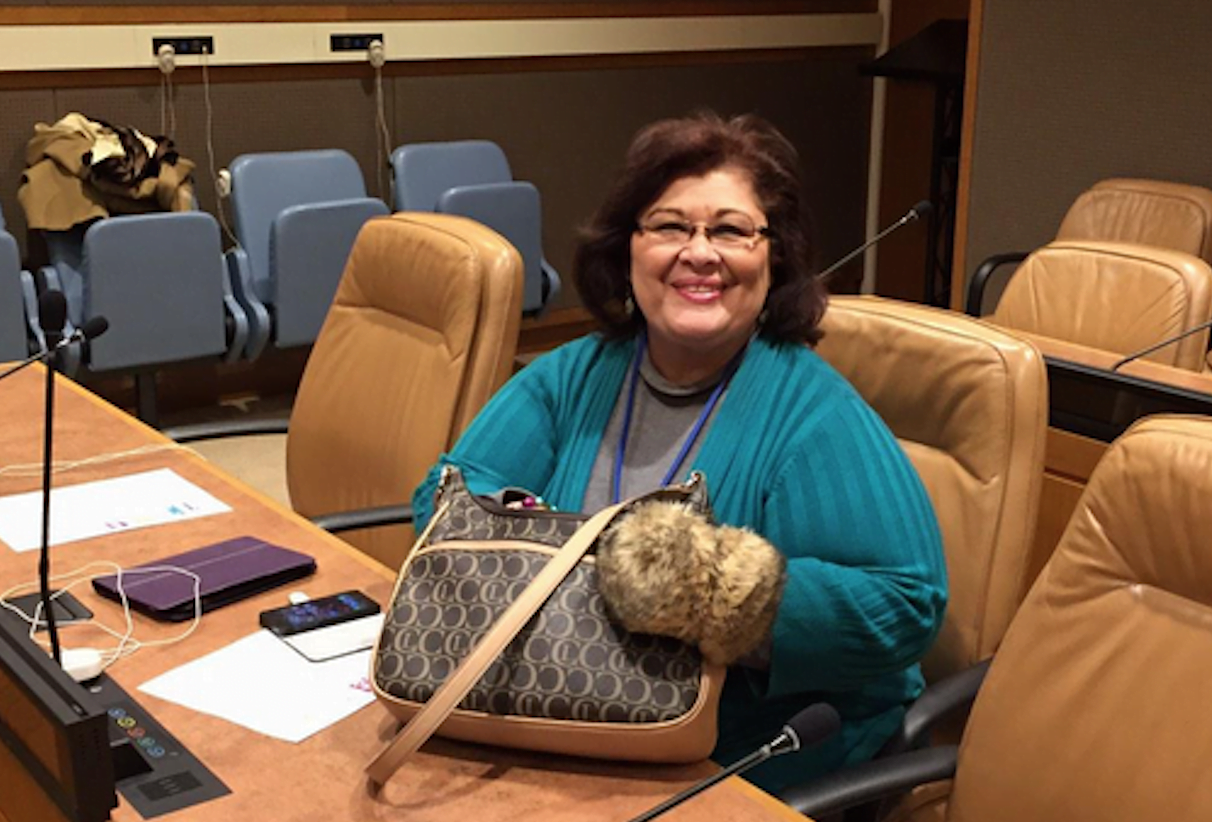“We’re hoping the Declaration includes a vision of the child as it was included in the Millennium Goals declaration, in the Rio+20 declaration, and in the Convention on the Rights of the Child. We’re not actually asking for anything new!”
This is the sixth installment of our “Meet A 2015-er” series that profiles the women and men who are helping to shape the Sustainable Development Goals and Climate Change negotiations as they take form later this year.
Today, we get another perspective from civil society. Arelys Bellorini is the Senior Advisor on Advocacy and Partnerships at World Vision and is based in New York.
Why are children today such an important group to include in the SDGs?
We see children as agents of social change which is why they also need to be included in the process.They are the future holders of societies so whatever we are planning today are going to have a long-lasting effect on them.
Are there any specific SDGs that World Vision has as a focus?
From the onset we’ve been working on having children central to the agenda, as a whole. Overall, the agenda should have a very clear vision for the child. We don’t want just one specific goal for children, but asking that children’s rights be protected across all the goals.
What’s your take on the negotiations so far?
We want them to get down to the next order of business…look at how this is going to be implemented, financed, monitored, and measured.
Are there any advocacy efforts that may surprise negotiators when you tell them it has an impact on children?
Quite often when we talk about implementation of these goals and the financing for development component, investment on children is not seen as part of the conversation.
National development plans should have a very strong and clear mandate on investment in children. So we’re talking about clear inclusion of children’s rights into national budgets…across the different sectors. That’s not just education and health, but…infrastructure, environment, things that are not usually thought of as pertaining to children.
What do specific financing measures look like?
Protection systems for example. When [states] are planning on development of national police bodies and…clear systems on the protection of citizens, they should include specific reference on the protection of children as part of the narrative of the national budget.
Has anything come up this week at the second drafting session on financing for development that’s taking place this week?
We put out a brief for Member States on that, but nothing concrete has come out because they just started the conversation on the zero draft. It’s very early, but we are making a very strong case.
We’ve heard from others that financing and data collection will go hand in hand.
Yes, we know that disaggregation of data requires an increase of resources but it is essential for inclusion of children’s rights.
You know, quite often you hear about “there needs to be a people-centered agenda, citizen-oriented!” But, then you have to actually put faces to those two words. ‘People’ is made out of women, men, it’s made out of children, young people, and senior citizens. So, the word ‘people’ is overly used to talk about us without really naming ‘us.’
The disaggregation of data by age, sex, and social group to track progress is of primary importance. It’s one key element to ensure proper measurement and to social accountability. We are concerned that poorly constructed indicators can mask failure or that the most vulnerable children are not being reached.
What’s going on with the indicators? Will they be set before September?
There has been a lot of conversation about [that]…especially whether these types of targets would enable development of indicators. Member States have…already come a long way to be able to agree on these 17 goals. They really need to get over the fact that they did agree and get on to what’s next!
Basically to develop a set of indicators that are true to the nature of the target so that the indicators make it possible to see whether those targets are being delivered on within those goals. It’s one of the [elements] that negotiators haven’t yet tackled.
There was discussion of the principles on which the indicators are to be based. It’s now up to the UN Statistical Division to take that…and scaled into actually producing the indicators.
You mention social accountability. How do you get children involved in these high level discussions?
World Vision has very strong programs on participation and citizen engagement, including in particular children’s participation. We even drafted a children’s version of the SDGs to get them more involved!
We think this agenda needs to scale up on the social accountability approach to ensure that there is ownership [of goals and targets] in citizens but also that they hold their respective government authorities at different levels accountable to the promises that they made.
What would you like negotiators to hear right now? What do you hope they will agree on in the September declaration?
We believe Member States keep circling around on the number of goals, whether we should reduce them, the targets and so on…that’s energy they should be dedicating to these other big pieces that are yet to see the clarity of light. It’s being delayed!
We’re hoping the Declaration includes a vision of the child as it was included in the Millennium Goals declaration, in the Rio+20 declaration, and in the Convention on the Rights of the Child. We’re not actually asking for anything new! We’re just asking them to recapture their commitment and bring that to scale in this context.
